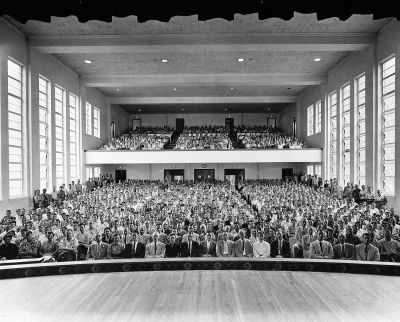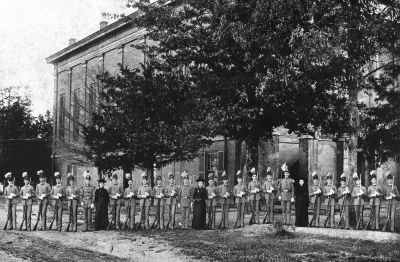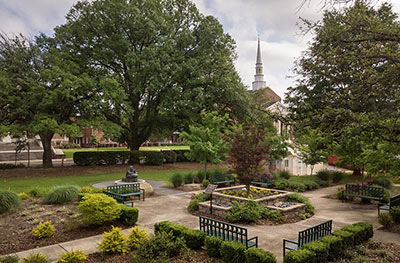
The Early Years
Mississippi College traces its roots back to 1826 when the institution was chartered by the state Legislature as Hampstead Academy. The same year, America celebrated its 50th birthday and John Quincy Adams served as president of a growing nation with a little more than 9.6 million people. Mississippi College remains the oldest institution of higher learning in the Magnolia State.
Situated on five acres near Mount Salus in Central Mississippi, the new school was renamed Mississippi Academy and began offering classes for boys and girls in January 1827. Back when tracts of land sold for $1.25 per acre, the academy was located on a tiny piece of the 6 million acres of property in Central Mississippi transferred from the Choctaw Indian nation to the American government. That treaty was signed in 1820. Three years earlier, in 1817, the state of Mississippi joined the United States.
Rhetoric was among the subjects taught to the first group of students at Mississippi Academy when the school- house opened. The initial campus building in a small town that later became Clinton was large enough to accommodate 150 to 200 students. Known as the "academic edifice" for decades, the school’s first building contained four "handsome" rooms, each with two fireplaces. To the west of it stood a second building with a beautiful chapel added just to the east of in 1860.
The academy was renamed Mississippi College in 1830 and was authorized "to confer...such degrees in the arts, sciences and languages as are usually conferred in the most respectable colleges in the United States..."
A private institution, Mississippi College was coeducational and in December 1831 made history as the first college in the nation to grant a degree to a woman. Gold medallions were presented to the first group of female graduates.
There were other historic firsts for the college in the years to come. In 1842, the college was given to the Presbyterian Church, which later encountered financial straits and returned it to its original owners in 1850. That same year, the Mississippi Baptist Convention obtained the college that today remains the second oldest Baptist institution in America.
Among other noteworthy dates in Mississippi College history: the school’s Female Department was discontinued in 1850, but in 1853 a Central Female Institute, later renamed Hillman College, was launched for women in Clinton.
Soon, cannons were fired in places like Vicksburg, Mississippi and Gettysburg, Pennsylvania with the Civil War shattering the fabric of American life. As North battled South in bloody skirmishes, the war nearly decimated schools like Mississippi College.

The Civil War Years and Beyond
The tumultuous times brought by the Civil War represented defining and often tragic moments in the history of Mississippi College. A large group of MC students, three faculty members, a trustee, and townspeople in Clinton organized the Mississippi College Rifles. The company boarded a train for Corinth and a lengthy series of Civil War battles, primarily in northern Virginia, but few returned home alive. The college kept its doors open during the war years with an average enrollment of about 30 students.
Amid the deadly Civil War struggles, portions of the Mississippi College campus served other purposes. Soon after it opened in 1860, Provine Chapel was utilized as a hospital by Northern U.S. General Ulysses S. Grant and his wounded Civil War troops. Others believe the ground floor of the two-story building was also used as a stable for his horses. A cherished campus landmark today, Provine Chapel remains the oldest building on the Clinton campus. It is the setting for Christmas concerts by the Mississippi College Singers, the headquarters of classrooms and offices for the Department of Christian Studies & Philosophy and a wonderful venue for Southern family weddings year-round.
Despite its endowment being wiped out, many of its students leaving to fight in the Civil War, and its physical plant badly deteriorating, MC experienced a post-war resurgence. Leaders like President Walter Hillman helped save Mississippi College and did so with a modest salary of $1,000 per-year.
Administrations of Mississippi College Presidents like Drs. Warren Webb, W.T. Lowery and J.W. Provine energized a fruitful period with new buildings, the redevelopment of the school endowment, and enrollment growth.


